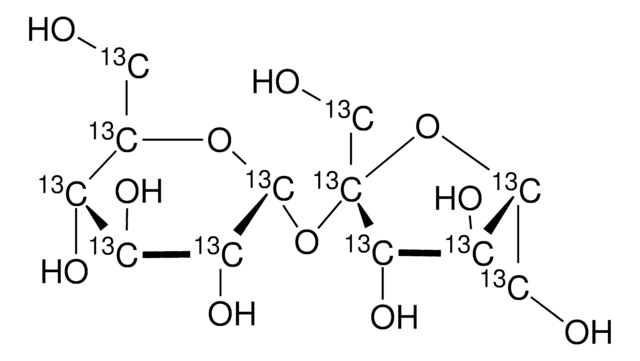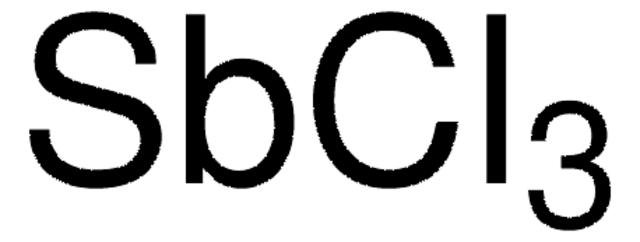637173
Antimony(III) oxide
nanopowder, <250 nm particle size (TEM), ≥99.9% trace metals basis
Synonym(s):
Diantimony trioxide
Sign Into View Organizational & Contract Pricing
All Photos(3)
About This Item
Linear Formula:
Sb2O3
CAS Number:
Molecular Weight:
291.52
EC Number:
MDL number:
UNSPSC Code:
12352302
eCl@ss:
38080202
PubChem Substance ID:
NACRES:
NA.23
Recommended Products
Assay
≥99.9% trace metals basis
form
nanopowder
reaction suitability
reagent type: catalyst
core: antimony
surface area
15.6 m2/g , typical
particle size
<250 nm (TEM)
bp
1550 °C (lit.)
mp
655 °C (lit.)
bulk density
0.5‑0.6 g/mL
SMILES string
O=[Sb]O[Sb]=O
InChI
1S/3O.2Sb
InChI key
ADCOVFLJGNWWNZ-UHFFFAOYSA-N
Looking for similar products? Visit Product Comparison Guide
Signal Word
Warning
Hazard Statements
Precautionary Statements
Hazard Classifications
Carc. 2
Storage Class Code
11 - Combustible Solids
WGK
WGK 1
Flash Point(F)
Not applicable
Flash Point(C)
Not applicable
Personal Protective Equipment
dust mask type N95 (US), Eyeshields, Gloves
Choose from one of the most recent versions:
Already Own This Product?
Find documentation for the products that you have recently purchased in the Document Library.
Customers Also Viewed
G P White et al.
Journal of occupational medicine. : official publication of the Industrial Medical Association, 35(4), 392-395 (1993-04-01)
An employee at a brazing rod manufacturing plant developed a generalized eruption of follicular papules and pustules. His job tasks included breaking up antimony ingots and melting the pieces in a crucible; he was exposed to antimony metal dust and
Ivo Iavicoli et al.
Journal of trace elements in medicine and biology : organ of the Society for Minerals and Trace Elements (GMS), 16(1), 33-39 (2002-03-07)
Antimony trioxide (Sb2O3) is used as a flame retardant in the textile industry. We carried out a study in a factory for the evaluation of antimony (Sb) occupational exposure and urinary levels in workers exposed to Sb2O3. Urinary levels and
R O Jenkins et al.
Human & experimental toxicology, 17(4), 231-238 (1998-06-09)
1. The aerobic filamentous fungus S. brevicaulis IMI 17297 methylated antimony from Sb2O3 substrate, with the formation of gaseous trimethylantimony (TMA). No evidence was found for the generation of other gaseous antimony compounds by this organism. 2. Biovolatilization of inorganic
Wook Jo et al.
Acta crystallographica. Section A, Foundations of crystallography, 63(Pt 3), 229-233 (2007-04-17)
The composition planes of the inversion boundary induced by the addition of Sb2O3 to ZnO ceramics were analyzed crystallographically by the application of electron back-scattered diffraction (EBSD) analysis and stereographic projection techniques. The inversion boundary was determined to consist of
Anal K Jha et al.
Biotechnology journal, 4(11), 1582-1585 (2009-10-22)
A low-cost green and reproducible microbe (Lactobacillus sp.)-mediated biosynthesis of Sb(2)O(3) nanoparticles is reported. The synthesis was performed at around room temperature. X-ray and transmission electron microscopy analyses were performed to ascertain the formation of Sb(2)O(3) nanoparticles. X-ray analysis indicated
Our team of scientists has experience in all areas of research including Life Science, Material Science, Chemical Synthesis, Chromatography, Analytical and many others.
Contact Technical Service








